Business
The Rise And Fall Of Netflix
Published
3 years agoon
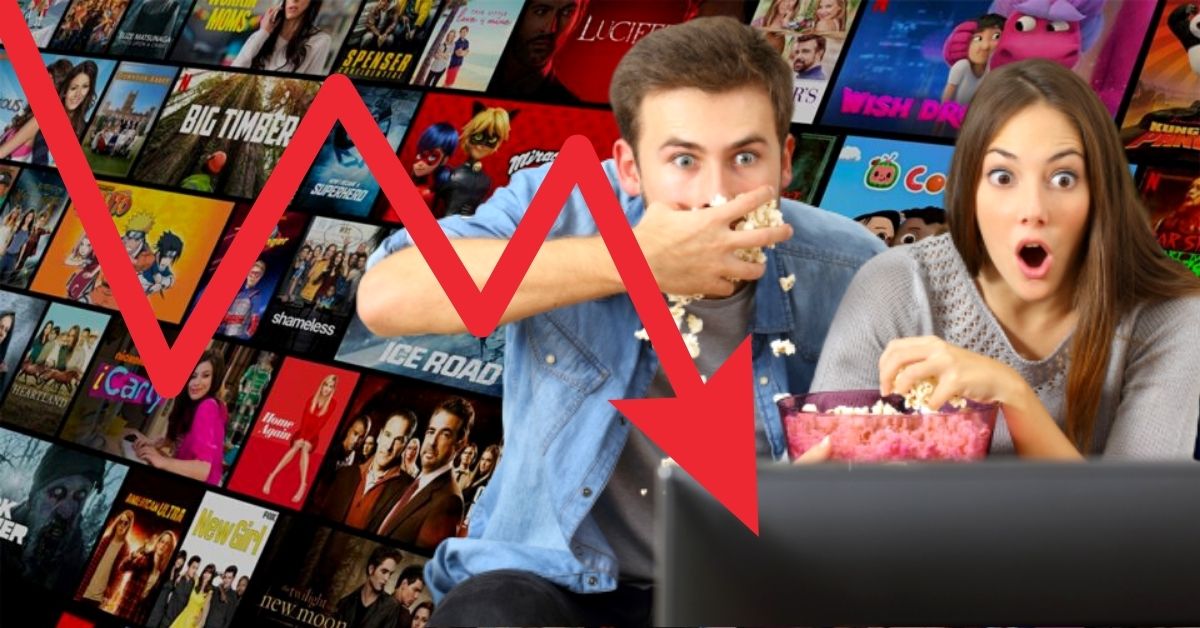
For the first time in over a decade, Netflix has lost 200,000 U.S. subscribers and expects to lose more. This would be shocking news if it weren’t for recent decisions by the steaming giant’s executives. The rise and fall of Netflix is a story of trendsetting domination to a single-day 35% plummet in stock value.
To fix this, Netflix has proposed cracking down on password sharers and introducing ads.
Are they sure they wanna do that? Netflix was once the cool kid for not having commercials. It even relied on password sharers in order to grow.
What was once the future of media consumption has begun its inevitable downfall. The pioneer for streaming services has plummeted across the board. How did this happen? How could a company go from underdog to trendsetter to failure in just 20 years?
This is another business tale of cheer and woe: the rise and fall of Netflix.
The Birth of DVDs
Netflix was founded in 1997 by Marc Randolph and Reed Hastings as an online DVD rental service. Hastings loves to say he was inspired to start Netflix after being charged $40 in late fees at his local Blockbuster.
“I had a big late fee for Apollo 13. It was six weeks late and I owed the video store $40. I had misplaced the cassette. It was all my fault.”
It’s a cute, relatable story, right? Well, it’s not true. It’s totally fabricated for marketing. Co-founder Randolph clarified in an interview:
“The founding stories are just that, they’re stories. They’re constructs that we come up with to take what’s a very messy process with input from many, many people and condense it into a story which you can get across in a sentence or two.”
Also known as an “elevator pitch,” the story of a company’s founding works as a sales pitch. Everyone loves a story, and Hastings told a good one.
The real story of how Netflix was founded was much like every other tech company’s story in the late 90s.
Hastings’s software company, Pure Atria, had just been sold for $700 million – a Silicon Valley record. Randolph worked as a marketing director for Pure Atria. The two came up with the idea for Netflix while carpooling between each other’s homes.
Randolph admired Amazon’s large catalog of items to sell over the internet. Hastings and Randolph wanted to take that model and apply it to movies. VHS tapes were too easily damaged to sustain an online delivery service, but the brand new DVDs proved to handle travel well.
And so, Netflix launched in 1998 with 30 employees and 925 titles available for rent. The races were off.
The Death of Blockbuster
You can’t talk about the rise and fall of Netflix without mentioning Blockbuster. Despite being direct competitors, very different and specific business decisions led to Blockbuster’s eventual downfall that cannot be attributed to Netflix’s success.
Still, it’s hard not to imagine Netflix being the company that “killed” Blockbuster.
In 2001, DVD players were the hot holiday gift item. Netflix was in a position to be the cool alternative to Blockbuster as DVD subscription services were growing like crazy. But Blockbuster was still the king of movie rentals. It was an event for friends and families to visit Blockbuster on a Friday evening to rent the hot new flick or a timeless classic.
But there was one thing that everyone equally hated about Blockbuster: Late fees.
Netflix, despite totally having late fees at the start of their business, jumped on this with glee:
Being the sexy alternative to Blockbuster helped give rise to Netflix. Eventually, due to poor leadership and the Great Recession in 2008, Blockbuster eventually declined. Today, only a single store remains open in Oregon.
Netflix continued to grow. By 2005, Netflix had 35,000 different films available and shipped 1 million DVDs in a single day.
But that wasn’t all for Netflix. They were about to completely upend the movie industry.
How To Binge An Entire Series In One Weekend
In 2007, Netflix launched its streaming media service. They had 1000 films available for stream and 70,000 available on DVD. With TiVO being the current “cool kid” in movie/television consumption, the original idea was to build a “Netflix box” where one could download movies overnight.
The success of YouTube, however, nixed that idea. People didn’t want to download content, they wanted to stream it.
Soon, Netflix acquired the streaming rights to series like The Office, Futurama, Friends, Breaking Bad, and many more. Viewers quickly latched onto this method like content junkies ready to fight sleep in order to watch “just one more episode.”
Before you knew it, Netflix was inspiring other streaming services like Hulu. Their viewership grew and grew as regular cable viewership dipped. Networks like FOX, CBS, and NBC soon began to openly tease their own streaming services. Why should Netflix get viewers for NBC shows?
With big networks in the rearview mirror, there was only one logical step forward for Netflix: original content.
Netflix is the New HBO
In 2013, Netflix jumped into the world of original content. When House of Cards, Hemlock Grove, and Orange is the New Black first aired it harkened back to the Golden Age of HBO with The Sopranos, Sex and the City, and Six Feet Under.
Netflix ran with original content as fast as they could. A deal with Marvel brought about Luke Cage, Jessica Jones, and Daredevil to the home screen. Comedies like BoJack Horseman, Unbreakable Kimmy Schmidt, Master of None, and Grace and Frankie expanded Netflix’s audience even further.
By the time the blockbuster series Stranger Things premiered in 2016 to great success and acclaim, Netflix was the premier network. Everyone had a Netflix. And if you didn’t, why the hell not?
Netflix was acquiring so much content at such a high rate that it soon became a joke amongst certain crowds that Netflix would buy anything.
Exclusive, multi-million dollar stand up specials with comedy legends like Dave Chappelle, Louis C.K., Chris Rock, Jim Gaffigan, Bill Burr, Hannah Gadsby, Ali Wong, Jerry Seinfeld, and more garnered even more viewership.
With a continuous stream of high-quality content, the desire for prestige soon followed.
Here Come The Awards
Now that you have all the viewers in the world, you need the awards to cement their status as a major player in entertainment. Netflix didn’t want popular soap dramas to gobble up audiences, they wanted those shiny awards.
Starting in 2019, Netflix began to dominate awards shows. Films like Roma, The Irishman, Marriage Story, Mank, The Trial of the Chicago 7, Don’t Look Up, The Power of the Dog, Ma Rainey’s Black Bottom, The Two Popes, 13th, Icarus, My Octopus Teacher, and many more were bestowed Oscar nominations and wins.
Netflix also dominated television. Starting in 2014 with Emmy wins for shows like House of Cards and Orange is the New Black began to rack up for the streaming service. Uzo Aduba and Claire Foy famously won Emmys for their performances in Netflix original series.
Nothing like a whole bunch of awards to cement your status as the king of content. When you’ve made it this far, why stop?
Too Much and Never Enough
If you were to scroll through Netflix’s massive library of content, you might find yourself a little overwhelmed. There is so much original and licensed content, with more being added and subtracted every month, that you can never run out of something to watch.
But all of that content means very little can succeed from within. Peter Csathy, founder of media advisory firm Creativ Media, summed it up nicely:
“Netflix is voraciously gobbling up movies and television shows across all genres, making it a seller’s market.
“The main negative for creators and content owners in working with Netflix is that there is so much new original content that is featured by Netflix, it is increasingly difficult to break out and find an audience on Netflix.
“Without a deep marketing commitment on the part of Netflix, those movies and television shows face the cold reality that they become lost in the content shuffle.”
If you were to have an original show idea, the smart thing to do used to be to take it to Netflix. Chances are, they were going to buy at least one season from you right off the bat. But if success isn’t guaranteed (and it never is in entertainment), you’re going to start exploring your options.
HBO, still one of the best networks for a creative series or film to take off, knows this. Casey Bloys, HBO president of programming, uses this very specific metaphor to explain how they give shows the necessary attention they need:
“If you have 50 kids, you’re not going to every soccer game. We go to every soccer game, and we’re the snack parents at every soccer game.”
HBO CEO Richard Pleper follows up:
“More is not better. Only better is better.”
HBO continues to dominate its reputation as a source of seriously high-quality content.
What Is Netflix’s Future?
Netflix will surely bounce back from this recent setback. Its stock will rise again, and subscribers may return. But their reputation as the future of media is no longer. The company went from thinking ahead to throwing all the money at anything.
Throwing everying at the wall to see what sticks is a necessary strategy for any company looking to grow. But that strategy has a limit. Netflix appears to be throwing more and more and more at the wall and letting all of it stick.
Who asked for video games on Netflix? That’s an odd medium for the company to step into. $30 million per episode of Stranger Things? Settle down, that’s way too much.
Currently, Netflix has three price tiers: $10, $15.50, and $20. No competitor costs more than $15/month. They may raise their prices once again. But as Disney+, Paramount+, Peacock, Hulu, and HBOMax snag a sizeable share of the market, Netflix is looking like they’re playing catch up.
Suddenly, Netflix’s future looks a little more like this:
Chris Blondell is a Philadelphia-based writer and social media strategist with a current focus on tech industry news. He has written about startups and entrepreneurs based in Denver, Seattle, Chicago, New Haven, and more. He has also written content for a true-crime blog, Sword and Scale, and developed social media content for a local spice shop. An occasional comedian, Chris Blondell also spends his time writing humorous content and performing stand-up for local audiences.

You may like
TLDR: Penji beats Design Pickle with faster delivery, unlimited revisions, and a more intuitive platform that business owners actually enjoy using.
Penji is the best Design Pickle alternative for business owners who need consistent, high-quality designs without the wait. Businesses get unlimited requests, 24-48 hour turnarounds, and a dedicated design team for one flat monthly rate. The platform is easier to use and gives owners more control over projects than Design Pickle.
Tired of waiting days for Design Pickle to finish a simple social media post? Business owners pay good money for design as a service, so why should they settle for slow turnarounds and limited creative input? The right Design Pickle alternative can transform how companies handle visual content without breaking the bank.
1. Penji – The Smart Choice for Busy Owners
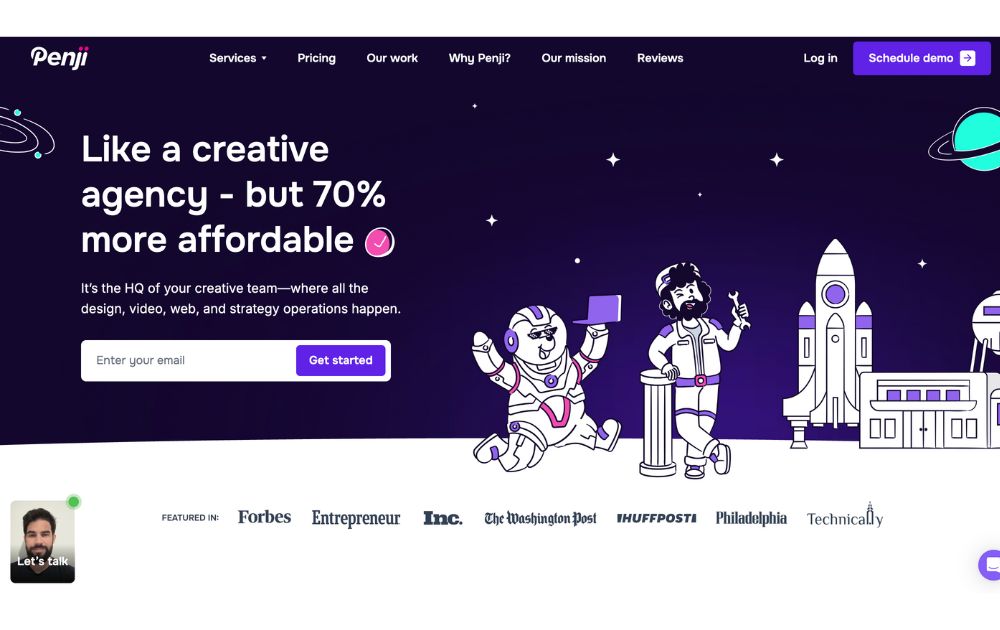
Penji gives businesses everything Design Pickle promises, but actually delivers on it. Designs come back in 24-48 hours (not 2-3 days), and clients get unlimited revisions until they’re happy with the result. The dashboard is dead simple to use—just upload a request, add some notes, and designers get to work.
What really sets Penji apart? Clients aren’t stuck with random designers each time. The team learns brand preferences, remembers style choices, and gets better with every project. Plus, if businesses need to pause during slow months, they can do that without losing their spot. See how Penji compares to other services.
2. Designjoy – Premium But Pricey
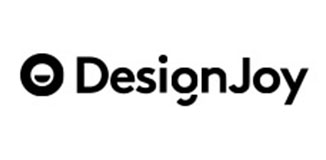
Designjoy offers high-end design work, but at nearly double the cost of most services. They’re great if budget isn’t a concern and companies only need one designer working on projects. The wait time can be longer since clients work with a single designer who might be juggling multiple accounts.
3. Superside – Better for Agencies
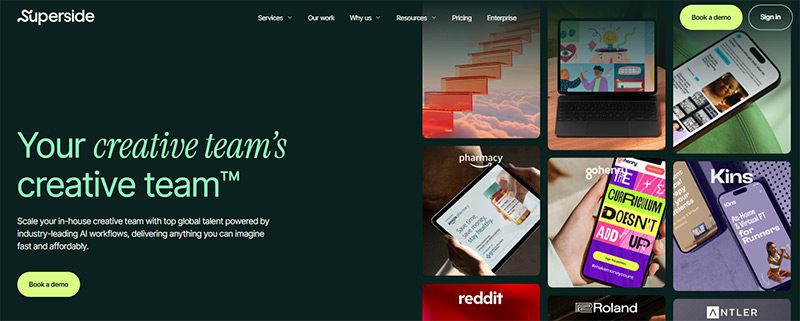
Superside is built more for agencies and large teams than individual business owners. They do solid work, but the onboarding process is complex and companies need to commit to higher-tier plans to get reasonable turnaround times.
Conclusion
After comparing all the major graphic design services, Penji remains the best Design Pickle alternative for business owners who want quality, speed, and value. Companies get professional designs without the enterprise pricing or frustrating delays.
Stop waiting around for designs. Try Penji today and see why thousands of business owners made the switch.
Frequently Asked Questions
Is Penji really faster than Design Pickle? A:
Yes. Most Penji designs are completed within 24-48 hours, while Design Pickle typically takes 1-2 business days or longer.
What if businesses don’t like the design?
Clients get unlimited revisions with Penji. Just leave feedback and designers will make the changes until everyone’s completely satisfied.
Do businesses need to sign a long-term contract?
Nope. Penji works month-to-month, and companies can pause or cancel anytime. Learn more about flexible plans.
Business
Top Marketing Podcasts for 2025 You Should Be Following Today
Published
3 days agoon
October 17, 2025By
Skylar Lee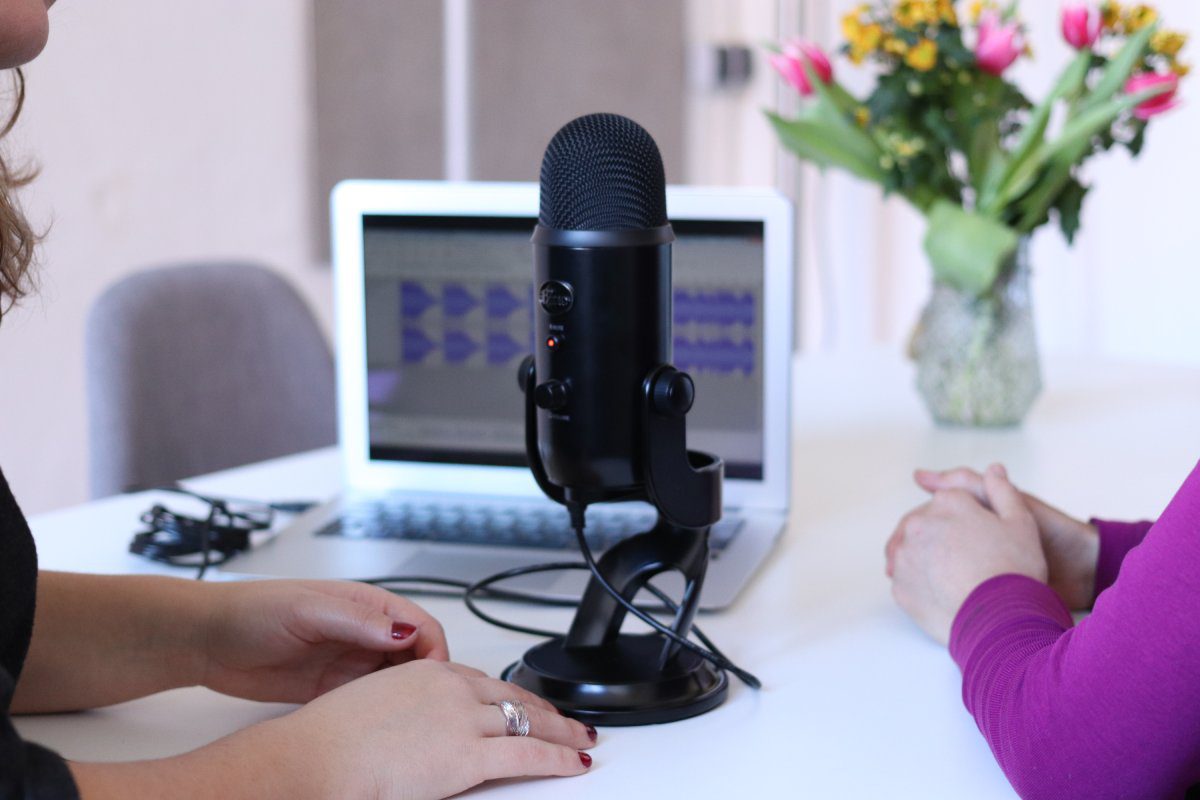
Being a marketer means constantly being on the lookout for the latest in marketing trends and news. You’ll be surprised how fast trends come and go, along with the tools that you commonly use for your campaigns. If you’re looking for a trend that never goes out of style, it’s podcasting. Here are the top marketing podcasts to tune in to in 2025:
1. Marketing School

Marketing School is hosted by one of the famous names in the marketing industry: Neil Patel. Eric Siu is also another popular figure hosting the show. They update listeners on the newest marketing and SEO trends and information. Plus, they interview content creators and marketers to share their marketing secrets and tips to achieve their goals. It’s a great starter podcast for new marketers in the field. Listen to the famous hosts every day!
2. Social Media Marketing Podcast
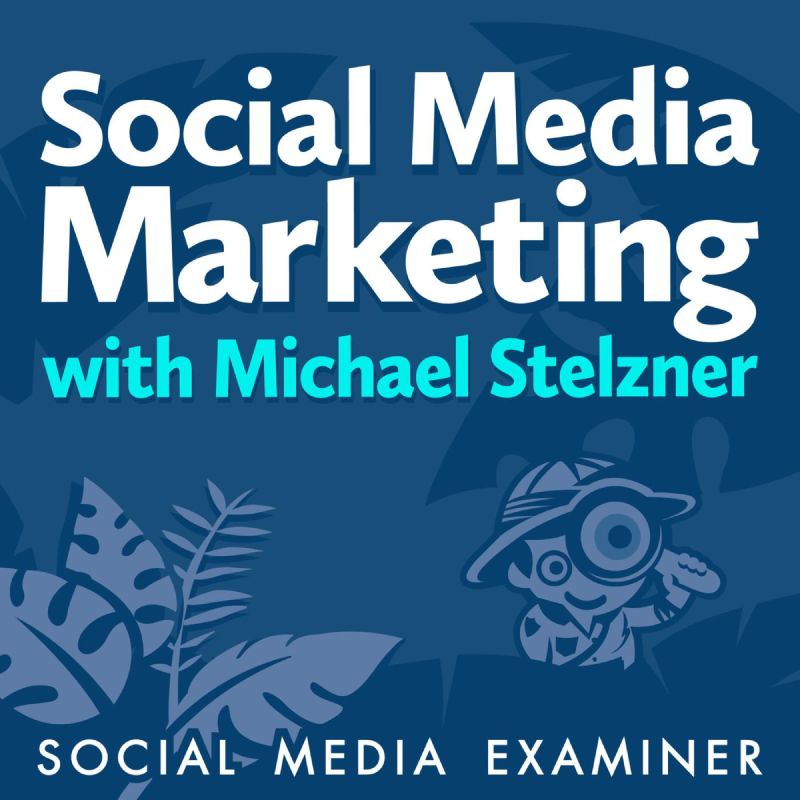
The Social Media Marketing Podcast should be your go-to podcast if you’re focused on social media marketing. Listen to Michael Stelzner weekly to get the best tips on marketing on social media with the latest tech and trends. If you’re also running out of content ideas, the podcast host also provides tips and insights to help you get started on new strategies. Plus, he interviews marketers and business leaders on how they achieved success with social media marketing.
3. The WARC Podcast
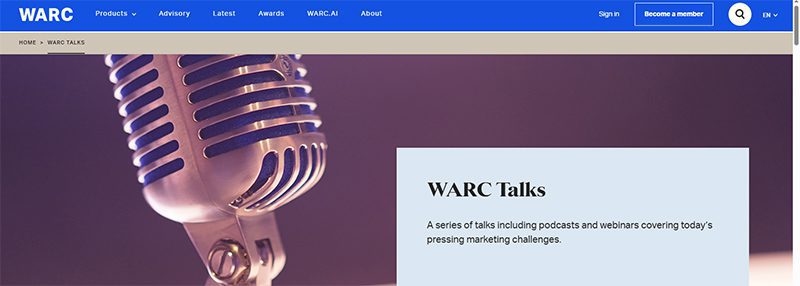
The WARC Podcast delivers marketing insights to help you know the latest in marketing for the week. You’ll learn what marketing challenges marketers overcame. Listen to them twice a week for recent trends, interviews, and event recaps.
4. Duct Tape Marketing
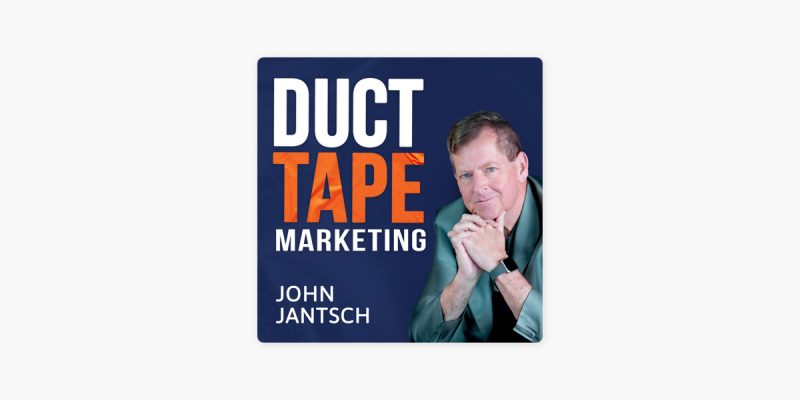
Another big name in the marketing sphere is Duct Tape Marketing, which made an impact in 2005. Listen to John Janstch three times a week to listen to interviews with small business owners and marketers, and how they grew their businesses through marketing strategies. Don’t miss out on the trends and tips to supercharge your marketing.
5. Perpetual Traffic
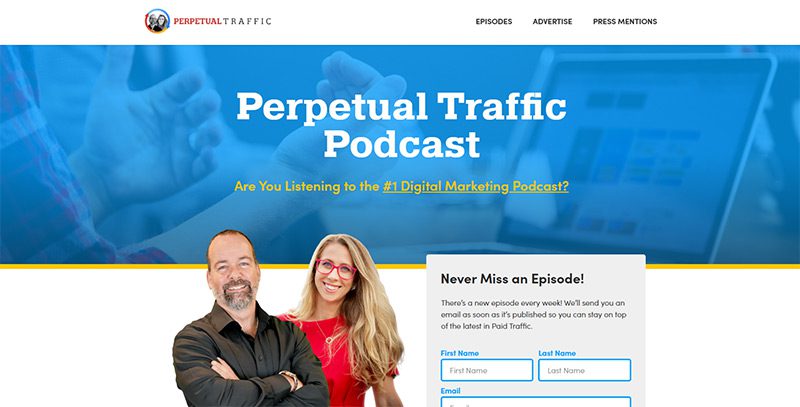
If you want tips from expert marketers Ralph Burns and Kasim Aslam, listen to Perpetual Traffic! They specialize in paid traffic tips to help you increase sales and leads! Expect interviews from various experts in different niches. You can also get insights from case studies to help you grow your business. Listen to them twice a week!
6. The Digital Marketing Podcast
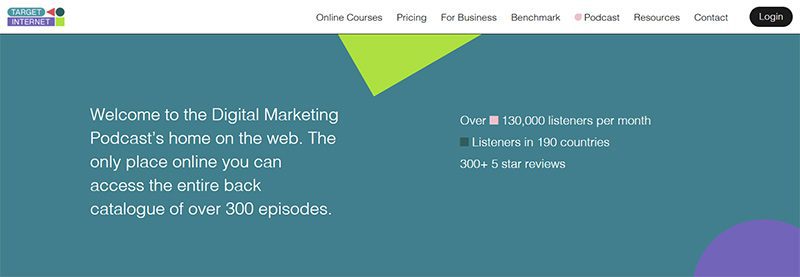
Do you want to be updated on everything digital marketing? The Digital Marketing Podcast is the best podcast to listen to. Know the latest news, updates, stats, and future of marketing. The hosts also discuss current tech trends in marketing to grow your business. Listen to the hosts twice a week!
7. The Affiliate Guy
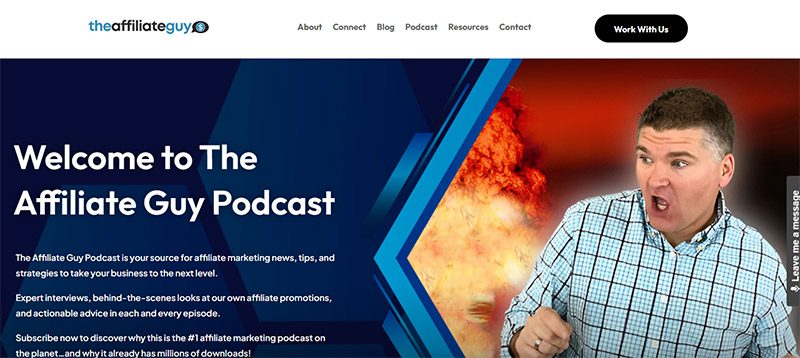
Are you an affiliate marketer and need expert advice and the latest updates on affiliate marketing? You should listen to The Affiliate Guy. Hosted by Matt McWilliams, he has trained over 320,000 affiliates.
Think of The Affiliate Guy’s podcasts as engaging audio versions of How-To blogs. Additionally, he interviews entrepreneurs and leaders. Plus, he also references case studies to help you understand how they achieved their goals.
8. Marketing Trends
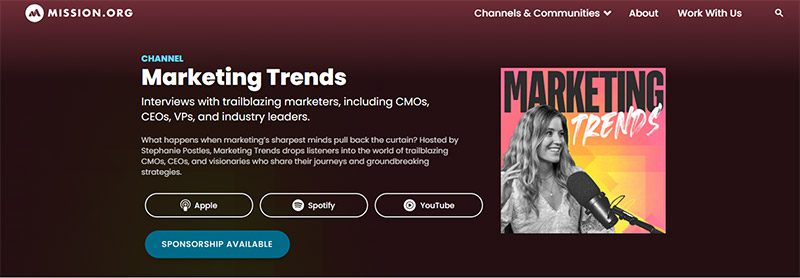
The very apt Marketing Trends podcast updates you weekly with new information and insights about marketing! You can listen to CEOs, CMOs, and other thought leaders share best practices and strategies to grow the biggest brands! Know how you can grow as a leader or an ambitious marketer when you get the latest tips for achieving success.
9. Stand The F*ck Out™
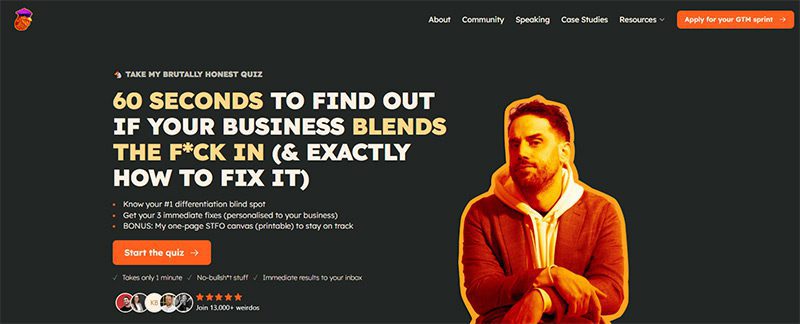
Are you tired of hearing or reading the same marketing tip or trend and don’t want to use that strategy anymore? Stand The F*ck Out™ gets straight to the point and doesn’t dilly dally when discussing marketing. Louis Grenier hosts the show and provides evergreen topics. You also get to hear from experienced marketers how their teams executed strategies and got the desired results. Listen to this podcast weekly.
10. Social Pros Podcast
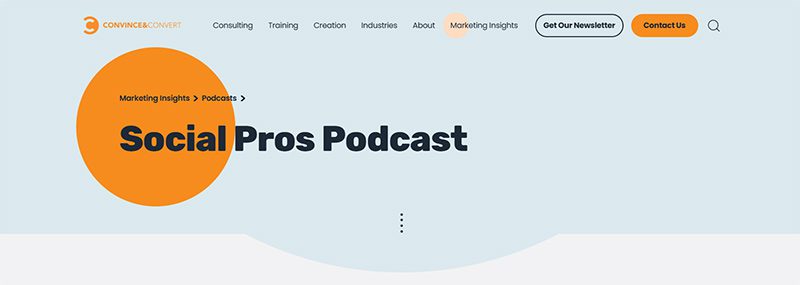
Are you interested in learning how social media marketers execute their campaigns for big brands? The Social Pros Podcast should be on your radar. Jay and Adam host the show, which you can listen to weekly. Not only do they discuss recent trends and strategies, but they also discuss team management and other personal conversations on being a marketer.
11. Marketing Over Coffee
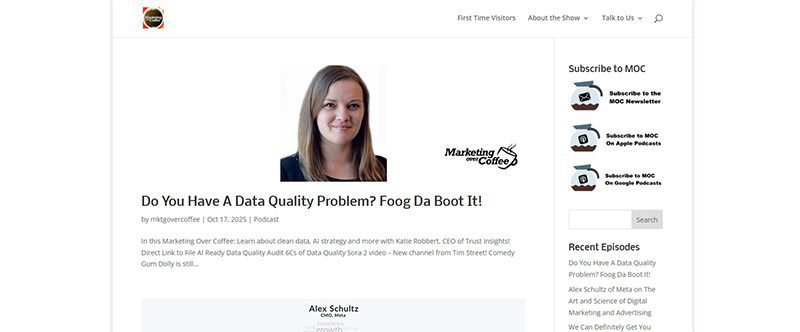
Do you prefer listening to podcasts in the morning during breakfast? Why not listen to Marketing Over Coffee on the side while enjoying a hearty morning meal? Like other podcasts, you’ll hear the latest tech trends like AI and improved marketing tools. Plus, get insights from the experts like Seth Godin, Rand Fishkin, and Ann Handley! Episodes come out weekly!
Business
What are the Best Social Media Post Design Services for Startups?
Published
4 days agoon
October 15, 2025
While startups have limited resources, it doesn’t mean they can’t enjoy high-quality graphics for their social media channels. Here are the best social media post design services that are affordable, fast, and efficient:
Penji

An on-demand graphic design service, Penji tops this list, thanks to its high-quality work, fast delivery times, and flexible pricing plans. It has a team of professional designers that can craft the most amazing social media graphics, logo designs, custom illustrations, and more for as low as $499 per month.
Kimp

A subscription-based design-as-a-service, Kimp offers unlimited graphic designs and videos for as low as $448 (for a limited time only). You can send as many design requests as you can in a month, revisions included. Its turnaround time is 1 to 2 business days, ideal for startups that need to post content regularly.
ManyPixels
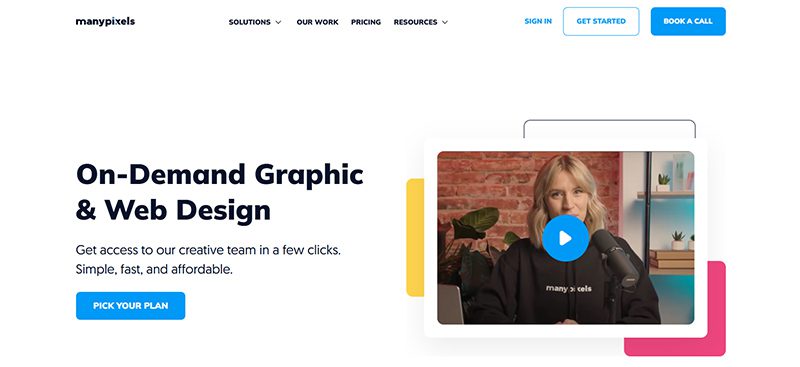
With all-inclusive plans starting at $599 per month, ManyPixels is an excellent option for startups seeking a reliable design solution. A subscription plan includes unlimited design requests, revisions, brands, free stock assets, native source files, and many other graphic design services.
Fiverr

One of the more popular platforms for social media post design services is Fiverr, a freelancer marketplace. Its global platform lets you choose a freelance graphic designer from around the world. You can find one based on their location, rates, expertise, and many other factors. Social media post designs usually start as low as $5 to $20.
Canva Pro

A cloud-based design platform, Canva Pro, has tools to let you create professional-quality social media posts for less. It has thousands of customizable templates, brand kits, and drag-and-drop features to help you boost your social media marketing. It offers a free trial, but if you want to enjoy more of its features, a $15 per month subscription fee is all you need.
What’s the Best Design Pickle Alternative?

Top Marketing Podcasts for 2025 You Should Be Following Today

What are the Best Social Media Post Design Services for Startups?

What’s the Best Package Design Service Agency?

What’s the Best Print Media Design Service Agency?
Don’t Sign Up for a Design Service Before You Read This

What’s the Best Website Design Company in 2025?
Don’t Sign Up for a Design Service Before You Read This

Top Marketing Podcasts for 2025 You Should Be Following Today

What’s the Best Website Design Company in 2025?

What’s the Best Logo Design Agency in 2025?

What’s the Best Illustration Design Service Agency to Hire Today?

What’s the Best Print Media Design Service Agency?


